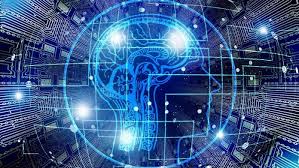Source: theprint.in
San Francisco: The increasing use of artificial intelligence is going to extract a heavy price in power unless the chip industry steps up and heads that off, according to one of the industry’s biggest companies.
Data centers are on course to consume 15% of the world’s electricity by 2025, according to Applied Materials Inc., the world’s largest maker of chip equipment. Those giant warehouses of computers currently suck in about 2%, the company said.
“AI has the potential to change everything,” said Applied Materials Chief Executive Officer Gary Dickerson speaking in a prerecorded remote keynote for the industry’s Semicon West conference. “But AI has an Achilles’ heel that — unless addressed — will prevent it from reaching its true potential. That Achilles heel is power consumption. Training neural networks is incredibly energy-intensive when done with the technology that’s available today.”
A flood of new devices are getting internet connections, generating more data and increasing the need for more computing power with artificial intelligence to make sense of that new information. Chipmakers, most of which use Applied’s machinery, have made their electronic components more energy efficient but not enough, according to Dickerson. The industry needs to come up with new custom designs tailored for AI processing and new ways of connecting those chips, he said.
Widths on the tiny circuits that give chips their functions are measured in billionths of a meter. But to move and store data quickly they require large amounts of power. An Intel Corp. Xeon processor may draw more than 200 watts, as much as an old-fashioned portable tube TV. Put thousands of those processors in close proximity and couple them with all of the other components needed to make a server and the electricity drain adds up.
Applied’s CEO made a promise to reduce the company’s power footprint and to innovate on the basics of manufacturing and materials to help his customers make more efficient components. One example he gave Tuesday involves a technique for growing tungsten atoms in a vacuum to make more efficient connections between parts of the chip.
Applied will move to 100% renewable energy and cut its carbon footprint by 50% over the next 10 years, Dickerson pledged. Even relatively simple changes in practices can help, he said. Flying an engineer from the U.S. to Asia and back generates about 2 metric tons of carbon dioxide. Applied has learned during the Covid-19 pandemic how to improve remote research and development and customer support, he said, making fewer such trips necessary.
